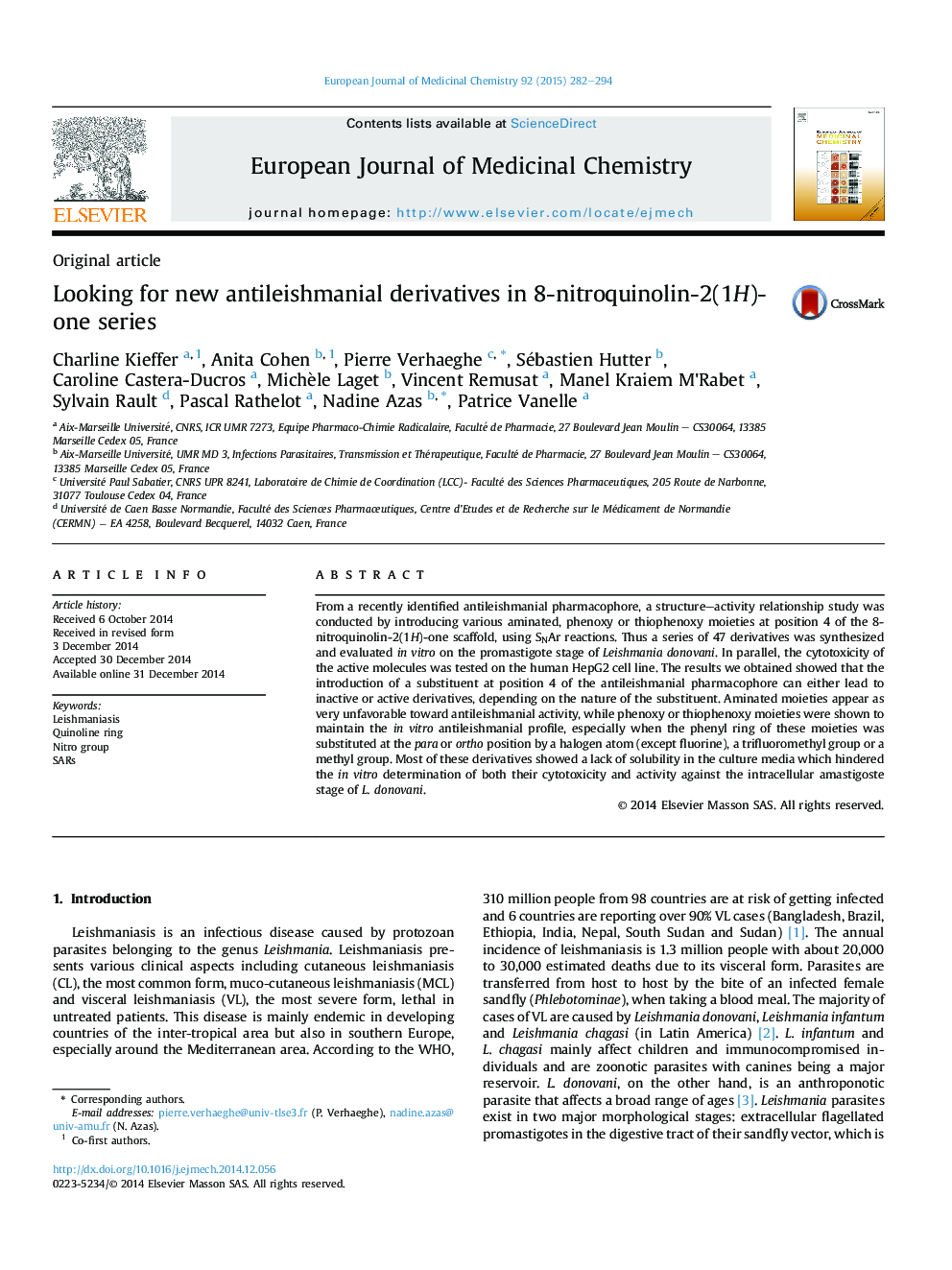| Article ID | Journal | Published Year | Pages | File Type |
|---|---|---|---|---|
| 1393996 | European Journal of Medicinal Chemistry | 2015 | 13 Pages |
•Various SNAr were conducted at position 4 of the 4-bromo-8-nitroquinolin-2(1H)-one scaffold.•4-aminated derivatives were not active.•Phenol or thiophenol moieties improve antileishmanial activity.•Anti-promastigote hit-compounds are para-substituted with hydrophobic CH3 or CF3 groups.•Aqueous solubility of the best compounds needs improvement.
From a recently identified antileishmanial pharmacophore, a structure–activity relationship study was conducted by introducing various aminated, phenoxy or thiophenoxy moieties at position 4 of the 8-nitroquinolin-2(1H)-one scaffold, using SNAr reactions. Thus a series of 47 derivatives was synthesized and evaluated in vitro on the promastigote stage of Leishmania donovani. In parallel, the cytotoxicity of the active molecules was tested on the human HepG2 cell line. The results we obtained showed that the introduction of a substituent at position 4 of the antileishmanial pharmacophore can either lead to inactive or active derivatives, depending on the nature of the substituent. Aminated moieties appear as very unfavorable toward antileishmanial activity, while phenoxy or thiophenoxy moieties were shown to maintain the in vitro antileishmanial profile, especially when the phenyl ring of these moieties was substituted at the para or ortho position by a halogen atom (except fluorine), a trifluoromethyl group or a methyl group. Most of these derivatives showed a lack of solubility in the culture media which hindered the in vitro determination of both their cytotoxicity and activity against the intracellular amastigoste stage of L. donovani.
Graphical abstractFigure optionsDownload full-size imageDownload as PowerPoint slide
